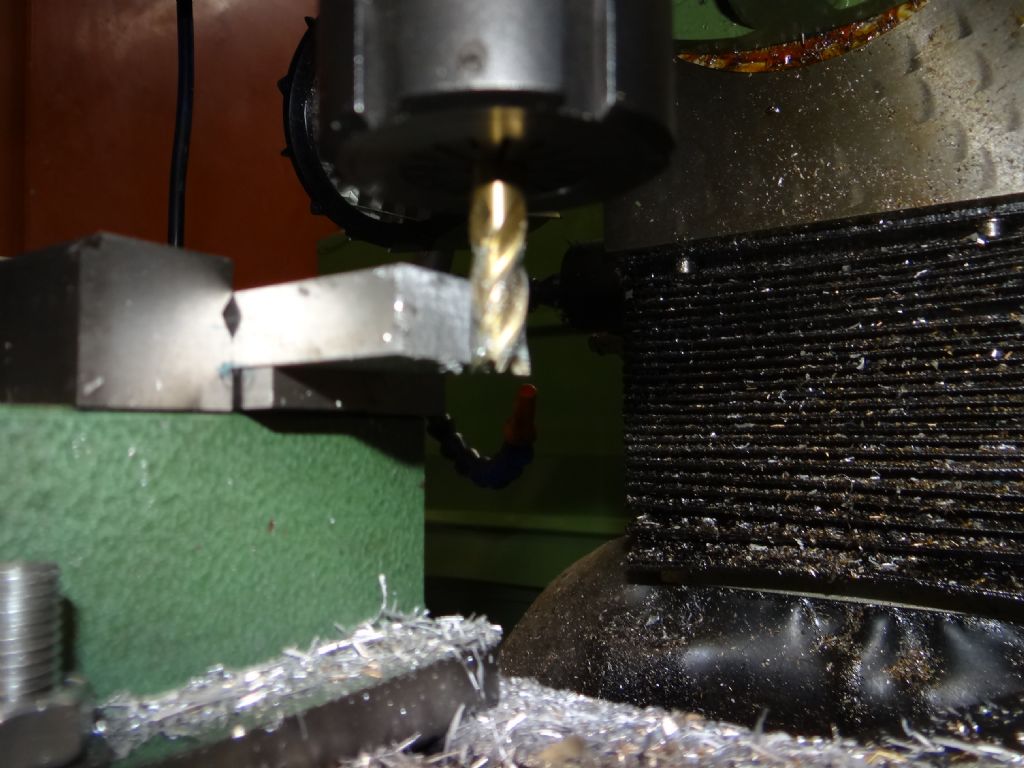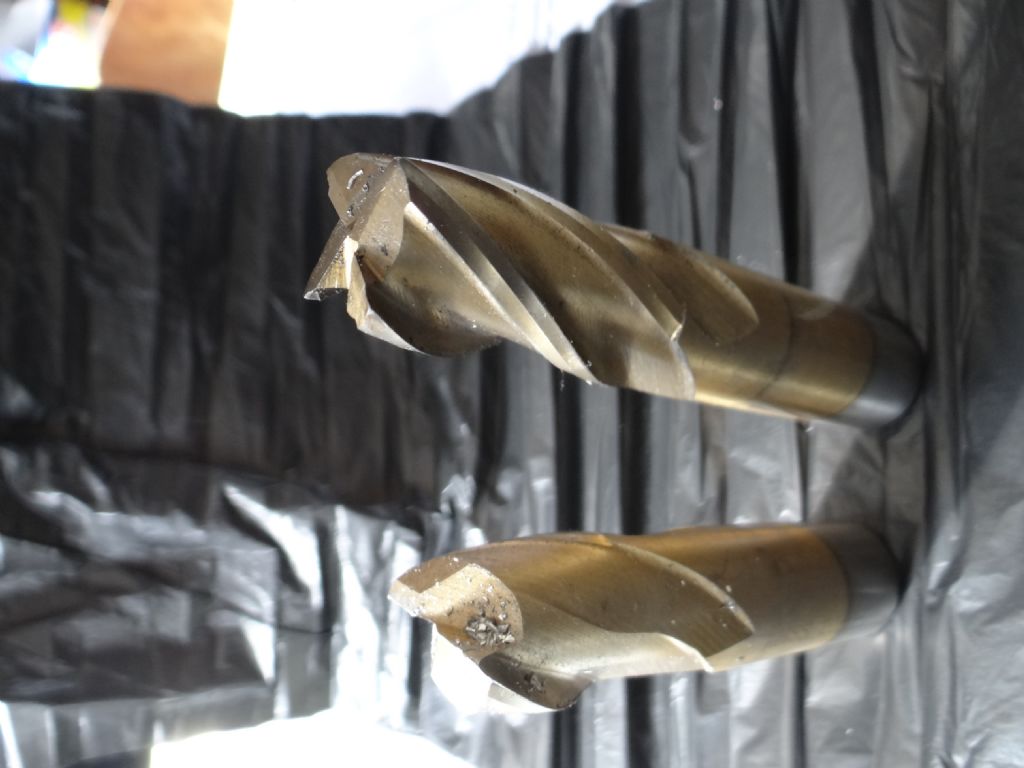Posted by Dave Springate on 26/03/2019 10:22:51:
Now if I wanted to true up the edge of a piece of 20mm steel would a cutter slightly wider than 20mm be the preffered way to go so that a full width cut is taken in a single pass?
Also would a two or 4 flute cutter be used for this operation.
I happen to be about to true up the edge of a 12mm aluminium strip:

Unlike a twist drill, all the edges of a milling cutter are sharp. It's good to spread the wear over the full cutting edge available rather than always using one part, especially as most jobs require use of the precious bottom face and corner end causing these to wear quickly. In this example I'm aiming to use most of the sideways edge of the cutter, which happens to be the smallest with enough side length to do the job. Only a light cut in Aluminium is needed, so a small diameter cutter run fast will do a "better" job than a big cutter turning slowly.
As there's plenty of room for swarf to escape, it's advantageous to use a 4-flute cutter – more metal removed per revolution. Two flute cutters are generally reserved for cutting slots because the extra space between flutes is less likely to choke with swarf. Though they make poor drills, you can start a slot by plunging a 2-flute cutter into a plate.

In practice, truing an edge could be done more-or-less well with either 2 or 4 flutes in various diameters, or – if there's space to hold the strip vertically – with a fly cutter. The advantage of fly cutting is their easily resharpened cheapness and the large diameters that can be smoothed, especially when flattening a plate.
Dave
 JasonB.
JasonB.





